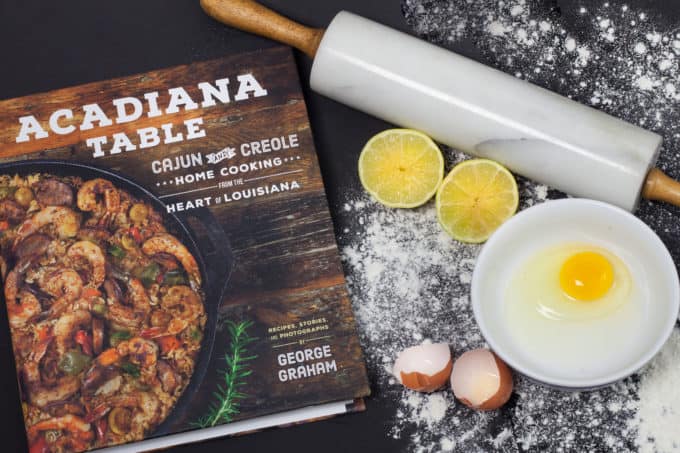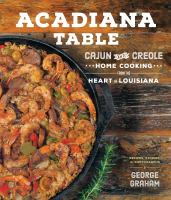Tag Archives:cooking

26
JulChill Out, New England
 We all know that one of the great benefits of living in New England is that we get to experience all the seasons. Our iconic foliage draws busloads of tourists every autumn, we usually get to have a white winter holiday season, and our landscape becomes furiously and gloriously alive every spring. As a result, our New England summers can feel all too brief, and many residents look forward to summer all the rest of the year.
We all know that one of the great benefits of living in New England is that we get to experience all the seasons. Our iconic foliage draws busloads of tourists every autumn, we usually get to have a white winter holiday season, and our landscape becomes furiously and gloriously alive every spring. As a result, our New England summers can feel all too brief, and many residents look forward to summer all the rest of the year.
While we’re busy bundling up for the other seasons though, we can sometimes forget just how hot and humid our New England summers can be. Heat waves seem to surprise us because they don’t happen very often in the course of a year – remember that stretch of 90+ degree heat a few weeks ago? Brutal, right? And no wonder we feel this way – in the course of June 2018 we went from chilly spring temperatures in the 40s to blazing 92F, according to AccuWeather.com. That’s a pretty big difference, especially after what seemed like a prolonged winter.
I’m fully aware that we don’t deal with nearly the temperature extremes experienced in other parts of the United States or the world. For instance, according to Weather.com the city of Quriyat in Oman in the Middle East just broke a world record for the highest low temperature in a 24-hour period, a whopping 108.7F. However, New England is quite humid, and therefore we tend to “feel” temperatures more acutely. In the course of a year, our weather changes from -40F to over 100F, with some areas of our region experiencing temperatures more extreme in either direction. From freezing pipes and frost heaves to the baking sun and high humidity, our roads and buildings have to stand up to a lot.
At this point, you’re probably asking yourself if I’m seriously writing an article about the weather. (In May she wrote about statistics and algorithms in dating apps, and this month it’s the weather? Does this lady even get out?) Fooled you! I’m actually writing about how to keep cool and comfy in the summer without air conditioning at home. On some level we’re all getting used to air conditioning in public buildings, but as long as you don’t have a health condition that necessitates cool temps, do you need to invest in air conditioning at home in the Northeast?
There are some good reasons to go without AC if you can help it. Lowering your electric bill is a good motivation, since once you turn on the AC unit there’s a strong temptation to leave it running for most of the day. The cost of an air conditioner can also be prohibitive, as well as the hassle of properly installing the unit. Also, there’s a lot of joy in hearing birdsong and other sounds of summer coming through the window, which is drowned out by the chugging of an air conditioner. Plus, there’s the principle of the matter – there’s something perverse about turning on an air conditioner for a small amount of comfort when human activity is responsible for rising global temperatures in the first place.
Passive cooling measures are easier than you think; they just take a little bit of planning. It’s an awful feeling to get to work and realize a storm is heading your way on a day you decided to leave some windows open to catch the breeze. A few easy tips include: close the shades during the day, especially on the sides of your house that catch the sun; close the windows on the sunny sides of your house, though you may decide to leave windows cracked on the shady sides of your house if cool air is blowing in; as soon as the evening temperature drops lower than the temperature inside your house, open those windows and enjoy the night breeze; use window fans to draw in extra cool night air if the day has been especially hot, making sure to crack another window to help the fan work as efficiently as possible; avoid stove or oven cooking if you can help it, and instead eat cold foods like salad or use a slow cooker to keep from heating up your kitchen. For even more practical tips for keeping cool and conserving energy, especially if you’re planning a remodel project, check out these books from the library: The Carbon Buster’s Home Energy Handbook by Godo Stoyke, The Energy Wise Home by Jeff Dondero, True Green Home by Kim McKay, and This Cold House by Colin Smith.
We have lots of cookbooks with slow cooker recipes. Browse our cookbook section on the Mezzanine level next time you’re in, and keep an eye out for titles like The Everything Healthy Slow Cooker Cookbook, The Slow Cooker Revolution, and The Chef and the Slow Cooker.
Swim, wear loose fitting clothing, eat ice cream – and when we hit a streak of 90+ degree weather and all else fails – come to the library. We have free air conditioning, and lots of books and great programs all summer long.
Liz Reed is an Adult and Information Services Librarian at the Morrill Memorial Library in Norwood, Massachusetts. Read Liz’s column in the July 26, 2018 issue of the Norwood Transcript and Bulletin.

19
JulFirst, You Take a Cajun Swamp Tour. Next, You Make a Creole Roux.
 In The World on a Plate (2014), Mina Holland describes 40 world cuisines and the “stories behind them.” Reading her book, you travel across Europe and down through the Middle East, east to Asia and south to Africa. She ends the book with the “melting pots” of the Americas: the Dutch, Spanish and Portuguese influences in South America and the French, Polish, Germany, African and Asian inspirations to the north.
In The World on a Plate (2014), Mina Holland describes 40 world cuisines and the “stories behind them.” Reading her book, you travel across Europe and down through the Middle East, east to Asia and south to Africa. She ends the book with the “melting pots” of the Americas: the Dutch, Spanish and Portuguese influences in South America and the French, Polish, Germany, African and Asian inspirations to the north.
Of these 40 world’s cuisines, only the regions of California and Louisiana are included a mention in Holland’s book. A California Salad is dressed with Asian ingredients. BBQ corn is smothered with Cajun seasoning, accompanied by crawfish, and grits. Holland’s explanation is that most of Europe left its mark on the Northeast and the Midwest. Spain, through Mexico, impacted the South-Northwest. Yet, Louisiana cuisine is a unique rich blend of French, Spanish, Caribbean and Native American cultures and food.
We’ve heard of Cajun Shrimp. Creole Gumbo. Yet, Cajun and Creole cooking can be confused. They are very separate – and somewhat the same. A Louisiana travel site simplifies the differences by explaining that Creole is “city food” and Cajun is “country.” Another clarification is that Creole uses tomatoes and Cajun never does. Think gumbo and jambalaya and this explanation can fit.
The Cajuns were immigrants from French Canada – the Acadians. Acadia was a colony of New France that included parts of Quebec, the Maritime provinces (New Brunswick, Nova Scotia, and Prince Edward Island), and what we know now as the state of Maine. As early as the mid-1700s, Acadians traveled south to Louisiana on the Mississippi River or by ship along the Atlantic. In Louisiana, “Acadian” was shortened, very simply, to Cajun. The Acadians brought their spices and foods with them to the Gulf Coast.
Creole in French means “a person not indigenous to the country or land.” The word in Spanish is criollo. In Louisiana the meaning is more distinct with the Creole culture sometimes described as a blend of the French, Spanish, African and Native American.
I was lucky enough to visit Louisiana, specifically New Orleans, during one of the hottest weeks of this past June – the last full week before the Fourth of July holiday. As I grew to understand (from Lyft drivers and bartenders), the tourists vacate New Orleans after July 4. The tourist season officially ends then and tired New Orleans hotel and restaurant and bar staff finally get a break from the hectic, nearly year-round party in the Big Easy.
The American Library Association knows its members well – librarians who are on lean personal and professional budgets. For that reason, ALA’s conferences are held in some of the hottest locales in the country in the summer (Anaheim, Washington DC, and Las Vegas) and the coldest cities in the winter (Chicago, Boston, and Indianapolis).
This year was no exception, of course, when the NOLA (New Orleans, LA) humidity made 95 degree weather practically unbearable during the conference held June 21 through the 26 at the Ernest N. Morial Convention Center along the Mississippi River.
My conference week (spent mainly indoors in the kilometer-long air-conditioned convention center) ended midweek and two of my hardy, best friends since 7th grade arrived for a girls-only Louisiana adventure. The three of us moved into a lovely hotel, complete with center garden, just steps from Bourbon Street. Together, we braved the New Orleans heat, learned of its illustrious history, and ate our way through its impossibly-delicious cuisine for five wonderful days.
I had already discovered the best fresh, hot beignets, bowls of gumbo, chargrilled oysters, and sippable drinks before my girlfriends arrived. So, we gobbled oysters at Dragos and sipped Sazeracs at the Public Belt. We hopped on and off the tour bus and visited the Garden District, Tremé, the French Market, and Canal and Tchoupitoulis Streets. At the original Café du Monde we guzzled coffee accompanied by beignets that were smothered in mounds of confectionary sugar (somewhat like puffed fried dough).
We braved a buggy ride behind a hairy mule (the mules fare much better than horses in the heat) and learned oodles about the architecture of New Orleans, including the restrictions for homes in the Historic District. We walked with some trepidation along Bourbon Street with its rowdy crowds, crisscrossing the French Quarter to our chosen nightly restaurants and cocktail bars. We tasted a Pimm’s Cup, a French 75, and a Viuex Carre in a Nick and Nora finely-etched glass.
There were many highlights of our girls’ vacation, but two are of the type none of us will ever forget.
The first was a swamp tour along the West Pearl River, reached by a 45-minute drive north of New Orleans and over the eight-mile bridge spanning Lake Pontchartrain. The bridge is new and it sits directly next to the ruins of the previous one destroyed in 2005 by Hurricane Katrina. Once on the bayou, our tour guide commanded his pontoon boat for a little over 2 hours along the swamps lined with Bald Cypress trees and filled with very visible alligators. He sidled up to a luscious shrub and offered us a pungent bay leaf, different than we had ever smelled before. He pulled up close to where a red fern grew from a lone river log. We three women from California and Massachusetts, and our local tour guide from the bayou, spent much of the time talking recipes and cuisine, serenaded by afternoon cicadas and shaded by overhanging swamp growth.
The second experience was a hands-on cooking class at the New Orleans Cooking School. While it is a business that caters to the tourist, it was also an adventure like no other. For 2-1/2 hours we three each had our own kitchen island complete with induction stove and all the equipment and ingredients we needed to make Cajun Gumbo, Beef Grillades with Grits, and Bananas Foster (complete with flame and magic dust.) We drank spicy Bloody Marys, local craft beer, and ate our own creation of three courses of deliciousness accompanied by our teacher/chef’s stories of Cajun and Creole lore.
There are many books throughout the libraries of the Minuteman Library Network. We have four of the best that will help you to navigate the Cajun and Creole cuisines.
Ten years after Hurricane Katrina, Cooking Up a Storm (2005) was re-published in 2015. The book was originally compiled as recipes “lost and found” by the Times-Picayune and stories and recipes of New Orleans’ culinary heritage. George Graham’s Acadiana Table (2016) includes traditional Louisiana recipes and some brand-new options. We have John Besh’s Besh Big Easy (2016). The author of the bestselling cookbook My New Orleans (2009), owner of twelve restaurants and host of two public television shows has written a fourth book about his native Creole cuisine. Another television cooking celebrity, Kevin Belton, has written New Orleans Kitchen, published this year. If you can’t make a trip to New Orleans, you can let the good times roll, Cajun or Creole-style in your own home.
Charlotte Canelli is the Director of the Morrill Memorial Library in Norwood, Massachusetts. Read Charlotte’s column in the July 19, 2018 edition of the Norwood Transcript and Bulletin.
